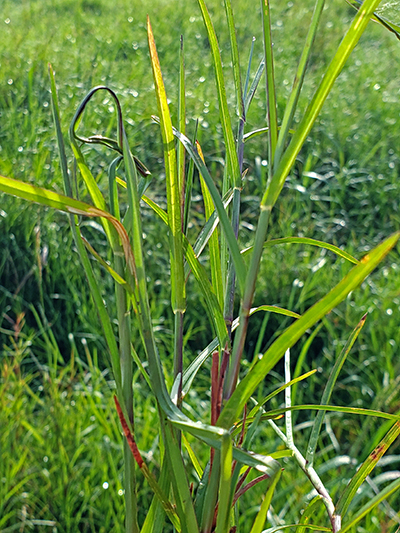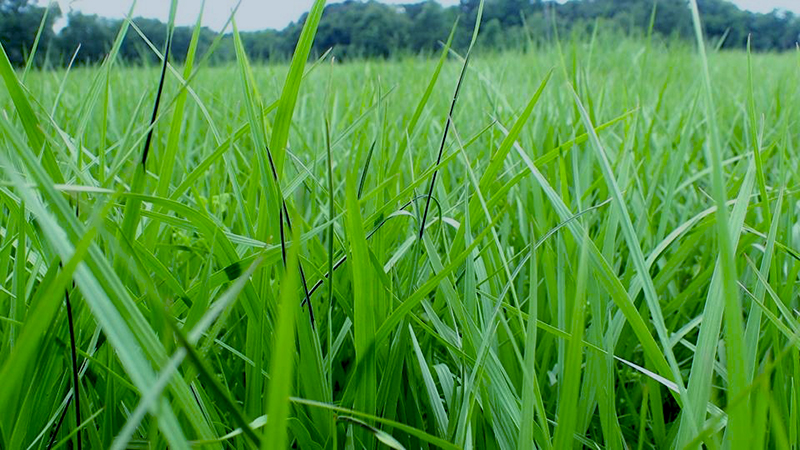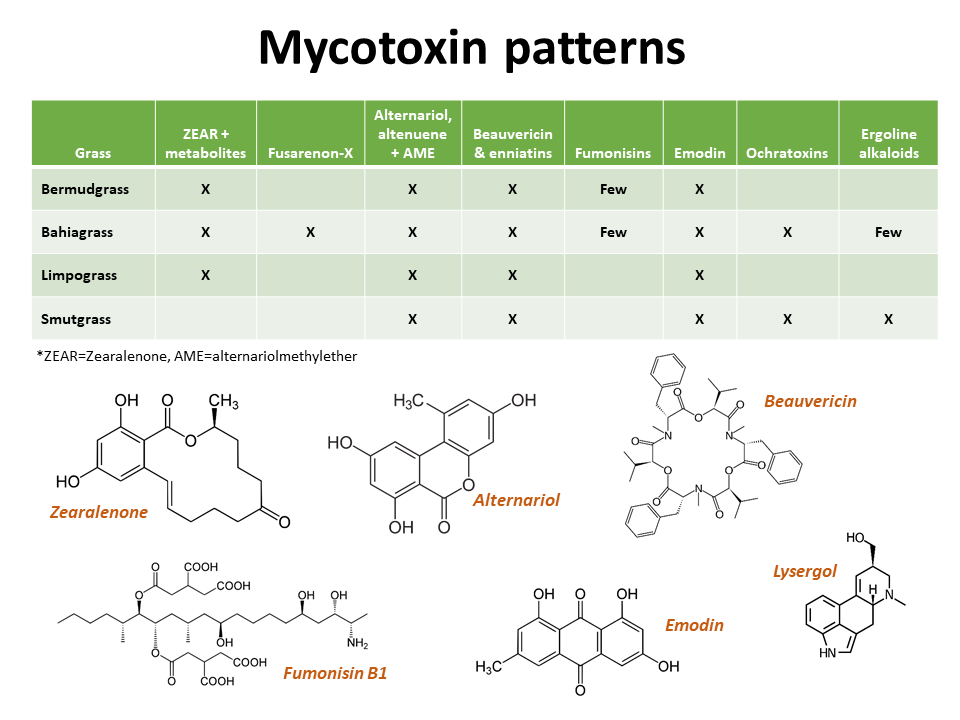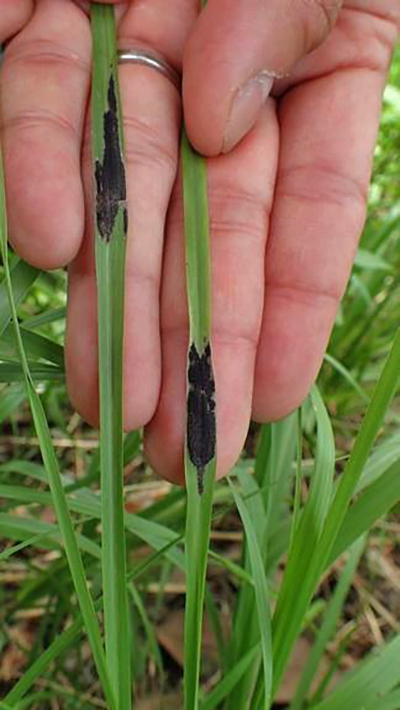
Limpograss with Myriogenospora atromentosa stroma on leaves causing a “tangle-top” appearance. Credit: Ann Blount, UF/IFAS
Over the past several years, livestock ranchers in Florida have reported concerns about animal health issues in cattle, equine, and endangered wildlife that have raised questions about the possibility of toxicity issues associated with forage grasses. With financial support from the Florida Cattlemen’s Association, a team of researchers and extension faculty was formed to the sample major forage grasses in the state for the presence or absence of endophytes and the mycotoxins they produce. The main objective of the project was to answer the question: Are Endophytes and Mycotoxins in Florida Forages Affecting Cattle Performance?
The first step was to purchase a freeze-dryer and heavy-duty coolers to expedite sample collection and processing. Ranches strategically located across the state were selected for monthly forage sampling and evaluation for the types of endophytes and mycotoxins present in those specific grass species. Forage sampling began in early 2018 and continued in 2019. All of the plant samples evaluated were collected either from fresh grass being utilized for grazing, or from hay or silage being fed to cattle, equine, or endangered wildlife. Working jointly with the Oregon State University School of Veterinarian Medicine Toxicology Department and their Endophyte Service Laboratory, over 350 forage samples have been collected and analyzed for the presence of mycotoxins.
The data from this initial statewide survey shows that there are reasons to be concerned. The team has documented the presence of fungal endophytes and the various associated mycotoxins occurring in several of these popular forage grass species. The tests have confirmed the identification of several fungal genera living endophytically in these grasses, such as Fusarium, Balansia and Myriogenospora. More significantly, they found seasonal fluctuation of mycotoxins levels known to cause animal health issues. To date, the team has identified and quantified the presence of zearalenone, ZEAR-4-sulfate Q1, beauvericin, emodine, ergoline and 15-AcetylDON, as well as several other mycotoxins that are potentially harmful to animal health.
Specific mycotoxin concentrations in Florida forage plants, and the extent that these are harmful to animal health are important questions still to be answered. The first step has been completed through statewide sampling. This research should provide preliminary information on forage sampling procedures for successful endophyte and mycotoxin analyses, DNA profiling of fungal endophytes, and mycotoxin type and quantification. All of the forage sample processing has not yet been completed, but the final results should help determine if seasonal occurrence and environmental conditions affect the production of mycotoxins. Additionally, leaf tissue has been cultured from each grass species to determine, through DNA sequencing, the specific fungal endophytes contributing to mycotoxin production in each of the grasses. The goal is to provide the Florida Cattlemen with unbiased information about endophyte and mycotoxin presence in Florida forages and how it relates, if found, to animal health and performance.
Project Team
UF-IFAS Faculty: Ann Blount, Marcelo Wallau, Sunny Liao, Ko-Hsuan Chen, Glen Aiken, Cheryl Mackowiak, Ian Small, Fanny Iriarte, Carissa Wickens, Samantha Brooks, Lori Warren and Jose Dubeux
County Faculty: Doug Mayo, Brittaney Justesen, Ed Jennings, J.K. Yarbourough, Clay Cooper, Joe Walter, Ray Bodrey, Alicia Halbritter, Caitlin Bainum, Shep Eubanks, and Justina Dacey
Oregon State University: Jenni Duringer, Oregon State University Veterinarian Medicine Toxicology Department
Cooperators: Aaron Stam and Saundra Tenbroeck
- Cool-Season Forages – A Pasture Perspective for 2022 - September 16, 2022
- Ornamental Rhizoma Perennial Peanut for Groundcover or Alternative Turf - March 18, 2022
- 2021 Cool-Season Forage Recommendations for Livestock and Wildlife - September 24, 2021



